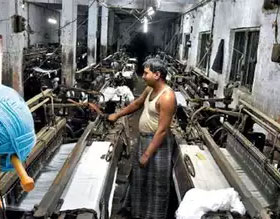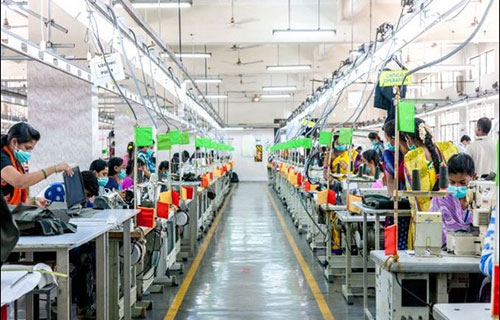"Credit rating agency ICRA’s latest research suggests, Indian apparel exports will continue to grow for the rest of the year, however the pace of growth will slow down as multiple challenges looming on the horizon, are a challenge for exporters to meet targets. Reviving after two consecutive years of decline, apparel exports in India are growing by 4 per cent Y-o-Y during four months FY2020. This growth is primarily driven by a 7 per cent Y-o-Y increase in exports to the US market, while exports to the key European and the UK markets have fallen by 2-3 per cent Y"
 Credit rating agency ICRA’s latest research suggests, Indian apparel exports will continue to grow for the rest of the year, however the pace of growth will slow down as multiple challenges looming on the horizon, are a challenge for exporters to meet targets.
Credit rating agency ICRA’s latest research suggests, Indian apparel exports will continue to grow for the rest of the year, however the pace of growth will slow down as multiple challenges looming on the horizon, are a challenge for exporters to meet targets.
Reviving after two consecutive years of decline, apparel exports in India are growing by 4 per cent Y-o-Y during four months FY2020. This growth is primarily driven by a 7 per cent Y-o-Y increase in exports to the US market, while exports to the key European and the UK markets have fallen by 2-3 per cent Y-o-Y. In addition, India’s position has also been adversely affected by the preferred access to key competing nations such as Bangladesh and Vietnam, through free trade agreements. These trade agreements including the Comprehensive and Progressive Agreement for Trans Pacific Partnership (CP TPP) and EU-Vietnam Free Trade Agreement, are making it increasingly difficult for Indian apparel exporters to maintain their competitiveness in the EU market.
Compliance issues and lack of reliable supplier base pose challenges
Besides these challenges, discouraging retail trends in the US are also exerting additional pressure on order flow of Indian apparels. Sales of clothing and clothing accessories in the US have largely remained flat during 8 months of current fiscal vis-a-vis the corresponding period last year 4.6% during CY2018. This could potentially result in renegotiation of realisations as well as elongated receivable cycle for the exporters.
of Indian apparels. Sales of clothing and clothing accessories in the US have largely remained flat during 8 months of current fiscal vis-a-vis the corresponding period last year 4.6% during CY2018. This could potentially result in renegotiation of realisations as well as elongated receivable cycle for the exporters.
Though currently large buyers in the US face huge exit barriers both in the form of compliance requirements and lack of a reliable supplier base for large quantities, their position will become clearer once the trade data for Q4 ’19 is released as it will also factor in the additional 15 per cent tariffs that become effective from September 1, 2019. Though large Indian exporters can benefit from this opportunity, they would first have to scale up their operations, maintain strict delivery schedules and meet stringent compliance requirements of the buyers in a short span of time.
Government schemes for exporters
The Indian government has also taken some steps which could provide a relief to the Indian apparel exporters. It has introduced a new scheme called Remission of Duties or Taxes on Export Products (RoDTEP) recently in September 2019.The scheme aims to replace all existing export incentive schemes besides adequately incentivising exporters. This would stablise the growth of domestic apparel exporters at 8-10 per cent during FY20. Renegotiation of apparel realisations by key buyers amid a slowdown in retail demand and continued competitive pressures from peer nations, together with high raw material costs and higher air freight charges are likely to put a pressure on margins.
No major impact on small companies
The impact though, is expected to be cushioned by the transitory increase in export incentives till December 2019, post the replacement of ROSL with ROSCTL. As a result, large exporters may report range-bound operating margins vis-a-vis last year. The sector is likely to witness a slight correction owing to higher working capital requirements amid elongated receivable turnover period. Nevertheless, it will remain largely comfortable. The slowdown will mainly affect smaller companies who have limited bargaining power and depend on smaller US retailers. However, as a large proportion of such entities already have weak credit profiles and fall in the non-investment grade categories, no major movements are expected in their credit ratings.












